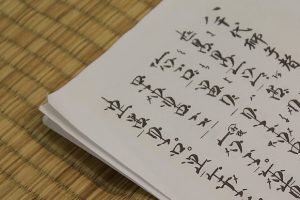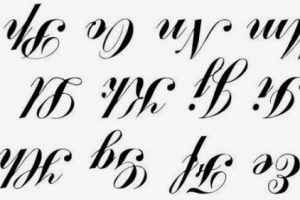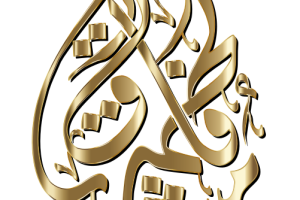Islamic calligraphy is a unique and significant form of art that has been an integral part of Islamic culture for centuries. Islamic calligraphy is the artistic practice of handwriting and calligraphy, primarily in the Arabic script, to create visual representations of religious texts or expressions of Islamic beliefs and culture. In this article, we will explore the history, techniques, and significance of Islamic calligraphy.
What is Islamic Calligraphy?
Islamic calligraphy is the art of writing Arabic script in a beautiful and ornamental way. It is a fundamental aspect of Islamic art, and calligraphers in the Islamic world have been creating masterpieces of calligraphy for over a millennium. Islamic calligraphy is a diverse art form that encompasses many styles, scripts, and materials, and it is used to decorate a range of objects and surfaces, from the walls of mosques and madrasas to the pages of Qur’ans and other religious texts.
History of Islamic Calligraphy
The art of calligraphy has been an essential part of Islamic culture since the 7th century. The earliest forms of Islamic calligraphy can be traced back to the time of the Prophet Muhammad, who was said to have instructed his followers to learn to read and write. The art of calligraphy was soon used to create copies of the Qur’an, which were considered holy texts and objects of great reverence.
Over time, Islamic calligraphy evolved into a complex art form, with various scripts, styles, and techniques being developed. During the Islamic Golden Age (8th-15th centuries), calligraphers in the Islamic world were renowned for their skill and creativity, and Islamic calligraphy became one of the most important forms of art in the Islamic world.
The Significance of Islamic Calligraphy
Islamic calligraphy is not just a form of art; it also has deep religious and cultural significance in Islamic society. Islamic calligraphy is used to represent the word of Allah, and it is often found in mosques and other religious buildings, as well as in religious texts and books.
The Islamic calligraphy is also used to express Islamic beliefs and values, such as the unity of Allah, the importance of prayer, and the virtues of patience, love, and compassion. Islamic calligraphy is a way to connect with the divine and to remind oneself of the beauty and power of Allah.
Types of Islamic Calligraphy
Islamic calligraphy is a vast and diverse field that encompasses many different styles, scripts, and techniques. Some of the most common types of Islamic calligraphy include:
1. Kufic Calligraphy: Kufic calligraphy is one of the oldest and most traditional forms of Islamic calligraphy. It is characterized by its angular, square-shaped letters and is often used for inscriptions and decorations.
2. Naskh Calligraphy: Naskh calligraphy is a cursive script that is widely used for writing the Qur’an and other religious texts. It is known for its legibility and clarity.
3. Thuluth Calligraphy: Thuluth calligraphy is a bold and elegant script that is often used for decorative purposes, such as on mosque walls or in illuminated manuscripts.
4. Diwani Calligraphy: Diwani calligraphy is a highly stylized script that is often used for royal decrees and official documents. It is known for its flowing, curvilinear letters and intricate flourishes.
Techniques of Islamic Calligraphy
Islamic calligraphy is not just about beautiful handwriting, but also about the techniques used to create it. There are several important techniques used by Islamic calligraphers to create their works of art.
1. Qalam: Qalam is the Arabic word for pen, and it refers to the tool used by calligraphers to write. Traditionally, the qalam was made from a reed called “bamboo” and was cut to a sharp point. Modern calligraphers may use pens made from other materials, such as metal or plastic.
2. Ink: Ink is an essential component of Islamic calligraphy. The ink used is usually black, and it is made from a mixture of water, soot, and gum arabic. Calligraphers may use different types of ink, depending on the effect they want to achieve.
3. Paper: Islamic calligraphers use different types of paper, depending on the type of work they are creating. Some calligraphers use traditional handmade paper, while others may use modern paper.
4. Layout and Composition: Calligraphers carefully plan the layout and composition of their work before they begin writing. They may use geometric shapes, grids, or other tools to create a balanced and harmonious design.
The Role of Islamic Calligraphy Today
Islamic calligraphy continues to be an important form of art and expression in the Islamic world. Calligraphers today continue to create masterpieces of calligraphy, both in traditional styles and in modern, innovative ways.
Islamic calligraphy is also gaining recognition and appreciation in the Western world, where it is seen as a unique and beautiful form of art. Many museums and galleries around the world now exhibit Islamic calligraphy, and it is increasingly being incorporated into contemporary art and design.
Conclusion
Islamic calligraphy is a unique and significant form of art that has played an essential role in Islamic culture for centuries. It is a diverse and complex art form that encompasses many styles, scripts, and techniques. Islamic calligraphy is not just a form of art; it also has deep religious and cultural significance in Islamic society, representing the word of Allah and expressing Islamic beliefs and values.
The techniques and tools used by Islamic calligraphers are also an important part of the art form, and calligraphers carefully plan the layout and composition of their work before they begin writing. Islamic calligraphy continues to be an important form of art and expression in the Islamic world and is increasingly gaining recognition and appreciation in the Western world as well.









Add Comment